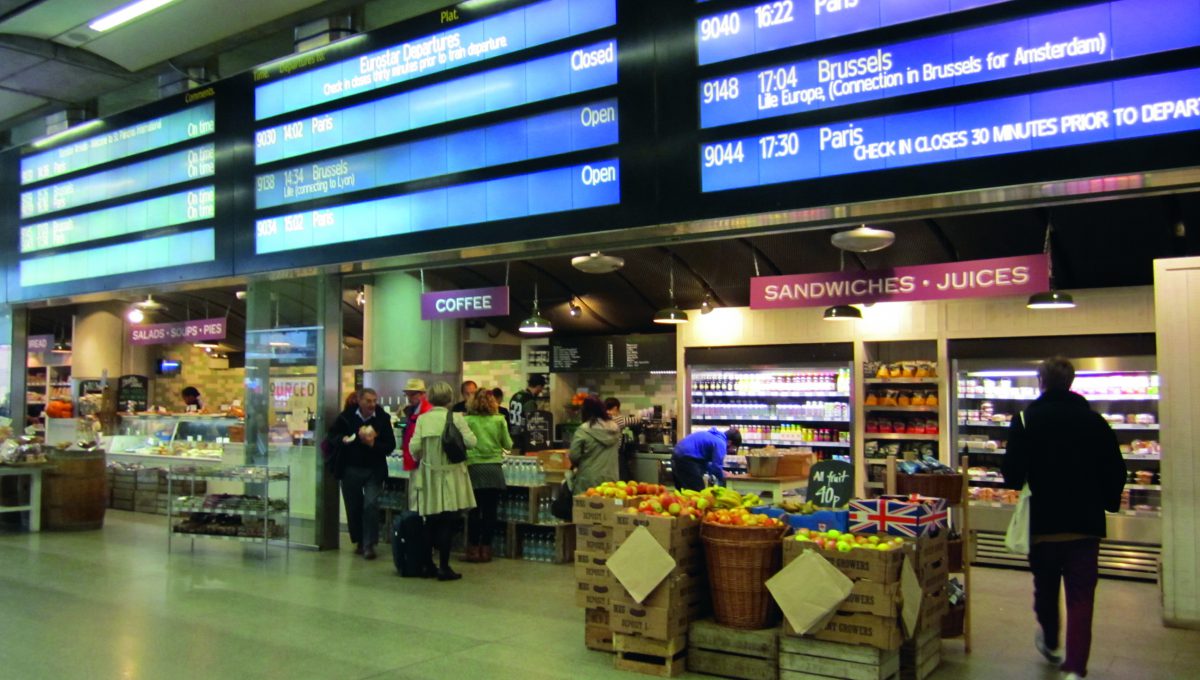
Keep up with our latest news and projects!

HighSpeed1 (HS1) takes ownership of St. Pancras International Station
Modernization team established. Study visits to major global transit stations including Madrid, Lisbon, New York, and Schiphol Airport
Architectural and engineering plans drawn and approved.
First retailers sign lease contracts
Renovation complete: 60 of 64 retail spaces on ground floor filled
Hotel St. Pancras’ historic renovation complete



In the 1970s and 1980s, the British railway system experienced a period of steady decline. The once-grand St. Pancras Station was in poor condition, dirty and attracted crime and drug use. The 1990s
brought discussion of renovating and modernizing the grade 1 historic building and renewing the surrounding neighbourhood, which is mostly inhabited by middle- and lower-income residents.



The main issue was how to maintain this building and its function as a major transportation hub and make it a destination of its own. Preserving its architectural integrity was a high priority but few wanted to invest in a commercial case for the building. Creating a commercial district within the building seemed nearly impossible with the amount of space needed for passenger-related areas, especially with Eurostar as a preeminent client, such as international customs, lounges, security and ticket information.
By opening the historic storage areas at the ground level, where beer, grain, and raw materials were once reserved, light and air was allowed into the ground level, providing an opportunity to position retail there and make the ground floor productive. Entrances to the station were placed on all sides, inviting the public into the space. Managers focused efforts on bringing in specialty stores and cafés into the ground level, not fast-food chains or other formula shops you can find all over London.
We wanted people to fall back in love with this station. So we asked ourselves: If we make this station attractive enough, can we make it a destination in its own right? And the answer was: Yes.
Ben Ruse – director HS1
Community buy-in. Being a good neighbour was a strict priority for HS1, the owner of St. Pancras Station, throughout the construction process and continuing today. They purchased double-glazed windows and
wash dryers for all surrounding residents because of the noise and dust incurred by the restoration process. Now HS1 sponsors various events both within and outside the station and are active in the community.
Find inspiration. The restoration team travelled all over Europe searching for the best practices of passenger travel. Schiphol Airport (Amsterdam) turned out to be the leading example. Schiphol’s ground level design, superb way-finding techniques, and pedestrian scale plan stood out to the St.
Pancras team.
Create a shared vision. The partnership between English Heritage (preservation), HS1, and London Continental Railways began with a shared vision strategy that made them come together and contribute to the group’s goal.
Aim high. Together the partners set a new bar for a travel hub. They aimed as high as possible by seeking Eurostar as a client. Without fear, they took risks on new brands & specialty stores that are not usually located in stations.
It works! With an effective partnership, shared mission, and active participation in the community, St. Pancras is a place for lingering, relaxing, and people watching. The architectural details of the station were wonderfully preserved and accentuated on a human scale—at the eye level. Compared to other stations and prerestoration, anti-social behaviour like violent crime and graffiti are not issues anymore. Also, St. Pancras continues to be a destination, even for those not travelling; about 25% of visitors come to the station without a transportation reason.
Interested? Join The City At Eye Level and share your story!
Discover moreThe St. Pancras International Station restoration is an inspiring example for a public transportation node with a unique strategy for improving space at the eye level. The restoration team set a shared vision and created a destination, reinstating the building as an urban landmark, national transportation hub, and community asset. Now the station is again an active gathering place.